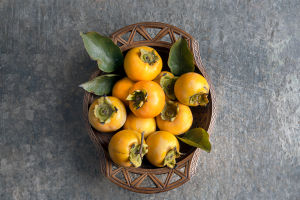Have you ever wondered why Japanese noodles are so beloved by locals and visitors alike?
Noodles are a staple of Japanese cuisine, and they come in many shapes, sizes, and flavors, offering a delightful variety of textures and tastes.
From hearty bowls of ramen to the refreshing chill of somen noodles in summer, we're about to take a deep dive into the fascinating world of Japanese noodles.
What Are Noodles?
In essence, noodles are made from flour—usually wheat or buckwheat—mixed with water to form dough, which is then rolled into long strands and dried. In Japan, noodles have been enjoyed in various forms for centuries, from hot dishes to cold options. The way they are prepared and served can differ by season and region, making each bowl of noodles unique and exciting.
Noodles are not only convenient but also delicious, making them one of the most popular dishes in Japan for both locals and tourists.
Popular Types of Japanese Noodles
Japan offers a wide array of noodle dishes, each with its own history and flavor profile. Let's explore the most popular noodle types in Japanese cuisine:
Ramen
Ramen is one of the most famous noodle dishes not only in Japan but around the world. Although it originated from Chinese cuisine, Japan has given ramen its own unique twist. Ramen soup bases come in many different types, including soy sauce, miso, salt, and meat bone broth. Each region in Japan has its own variation, making ramen a versatile and regional dish with endless possibilities.
Udon
Udon is a thick, chewy noodle made from wheat flour, and it's a favorite in Japan. Udon can be enjoyed in several ways, depending on the season and personal preference. Cold udon, known as "zaru udon", is served with a dipping sauce, while hot udon, called "kake udon", is served in a warm broth. The texture of udon noodles is hearty and satisfying, making it a go-to comfort food.
Soba
Soba noodles are made from buckwheat flour, giving them a nutty and earthy flavor. These thin noodles can be enjoyed both hot and cold. A popular way to enjoy soba is "zaru soba", which is served cold with a dipping sauce, and "kake soba", served hot in a flavorful broth. Soba is also a traditional dish eaten on New Year's Eve, called "toshikoshi soba", to symbolize longevity.
Somen
Somen are very thin wheat noodles, typically served cold in the summer. One fun way to eat somen is through "nagashi somen", where the noodles flow down a bamboo chute, and diners use chopsticks to catch the noodles. This playful way of eating somen is refreshing and captures the essence of Japanese summers.
Yakisoba
Yakisoba is a stir-fried noodle dish made with steamed Chinese-style noodles and various vegetables and meats. The noodles are typically flavored with a savory sauce, but you can also find versions with salt or curry flavors. Yakisoba is a popular dish at festivals and street markets, showcasing the vibrant culture of Japan's street food scene.
Types of Noodles
Now that we've covered some popular noodle dishes, let's look at the different types of noodles used in Japanese cooking. The type of noodle can significantly impact the dish's flavor and texture.
Wheat Noodles
Ramen Noodles
Ramen noodles are firm and slightly chewy, designed to absorb the rich flavors of the broth. They are made from wheat flour and sometimes eggs to enhance the texture. These noodles are perfect for hearty ramen soup, holding up well in thick, flavorful broths.
Udon Noodles
Udon noodles are thick, white, and have a chewy texture. Depending on the region, udon noodles can vary in softness, with some being firmer and others softer. Their thick and hearty texture makes them perfect for both hot and cold preparations.
Somen Noodles
Somen noodles are extremely thin and smooth, making them ideal for cold dishes. These noodles have a delicate texture and are often served in refreshing summer dishes.
Soba Noodles
Soba noodles are grayish and have a nutty flavor due to their buckwheat base. They are often served cold or in a hot broth, and they are regarded as a healthy option due to their rich nutritional value.
Noodle Thickness
The thickness of noodles can make a huge difference in the taste and texture of a dish. Let's take a look at how noodle thickness varies:
Thin Noodles
Somen noodles have a diameter of about 0.6 to 1.2 millimeters, and they are known for their smooth, slippery texture. They are especially great for cold dishes, giving a refreshing bite.
Thin Soba Noodles
Soba noodles are typically less than 2 millimeters thick. They have a delicate, smooth texture and are loved for their fine, smooth mouthfeel.
Medium Noodles
Medium-thick ramen noodles are around 1.5 to 2 millimeters. They are firm, offering a satisfying bite and holding up well in a variety of broths, from light to rich.
Thick Noodles
Thicker noodles, like yakisoba, are around 4 to 5 millimeters thick. These noodles are sturdy and perfect for stir-frying. They absorb the sauce well and provide a chewy texture that pairs perfectly with savory flavors.
Cooking Noodles
In Japan, the way noodles are cooked is a big deal. The preparation method can greatly influence the flavor and texture, ensuring the noodles are at their best.
Ramen
Ramen noodles are cooked quickly, usually in about 1 to 2 minutes, to preserve their firm texture. After boiling, they are drained and immediately mixed with the broth.
Udon
Udon noodles require a longer cooking time—around 10 to 15 minutes—to reach their signature chewy texture. After boiling, they are typically rinsed in cold water to enhance their firmness.
Soba
Soba noodles are delicate, so they require careful cooking. Typically, they are boiled for about 4 to 5 minutes and then rinsed under cold water to remove excess starch, enhancing their nutty flavor.
Somen
Somen noodles are very thin and cook quickly, usually in just 1 to 2 minutes. After boiling, they are rinsed in cold water and chilled, making them perfect for refreshing cold dishes.
Conclusion
Japanese noodle culture is rich and varied, offering a variety of types and preparation methods that make every bowl of noodles a unique experience. Whether you're enjoying a warm bowl of ramen, a refreshing plate of somen, or a comforting serving of udon, there's always something special about Japanese noodles.
So, next time you're in Japan or at a Japanese restaurant, don't forget to explore the world of noodles—you might just find your new favorite dish!
Happy slurping, Lykkers!


